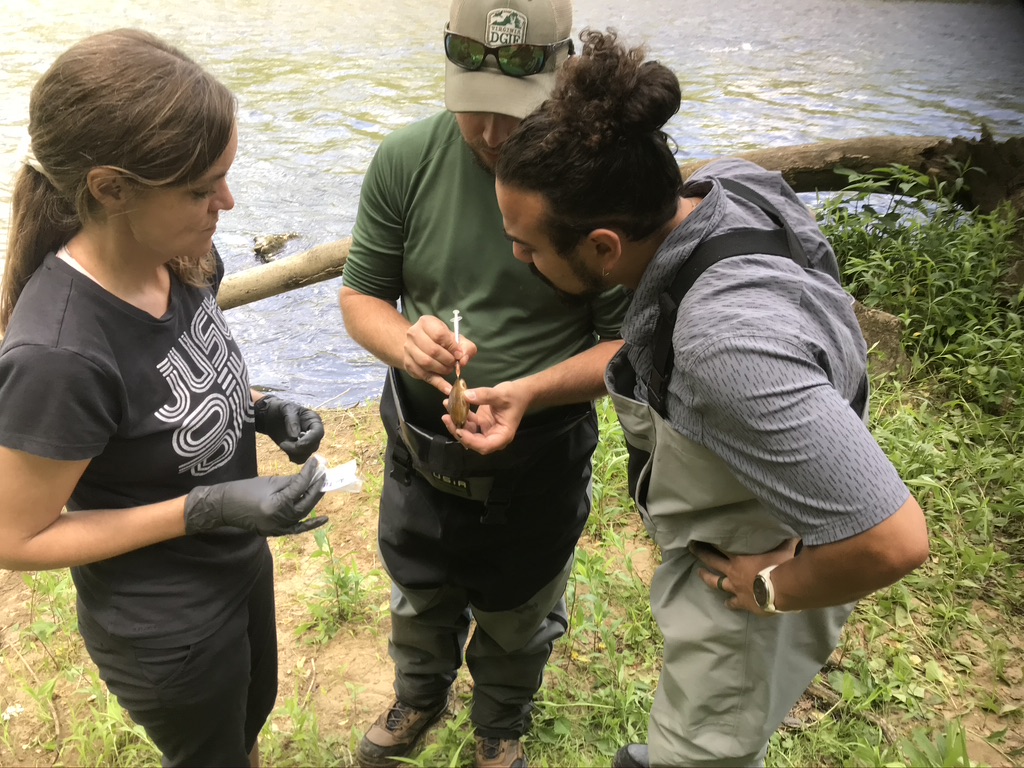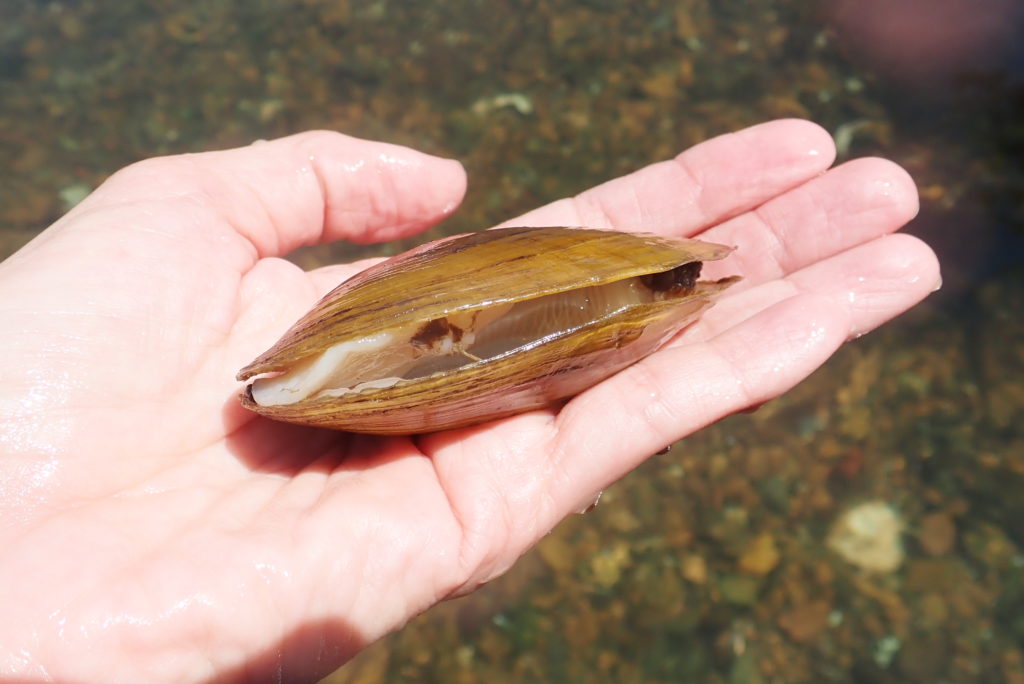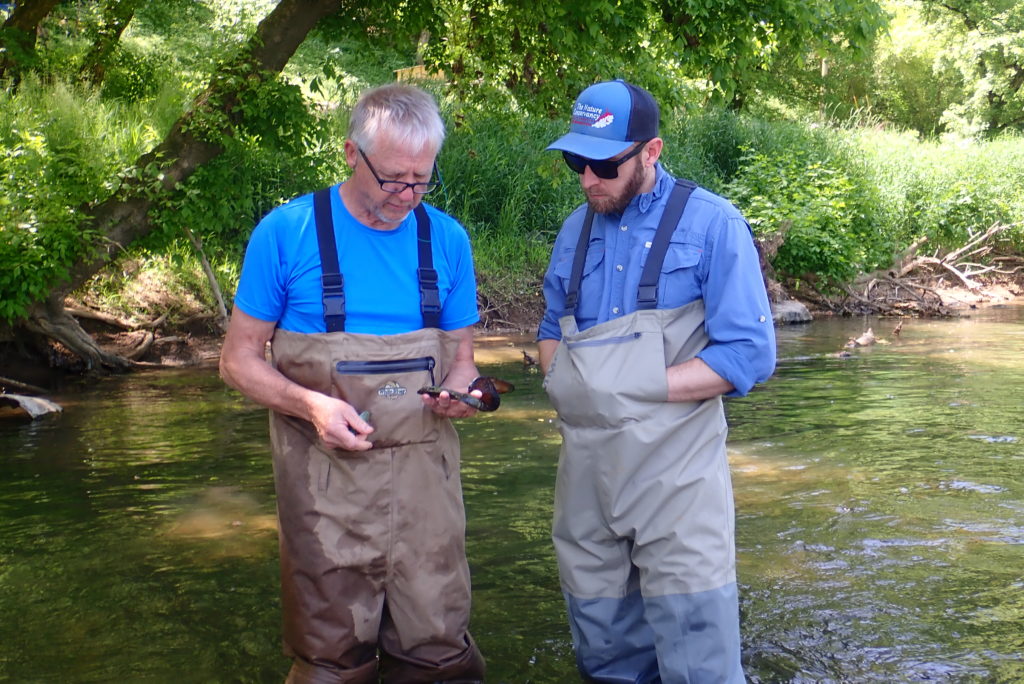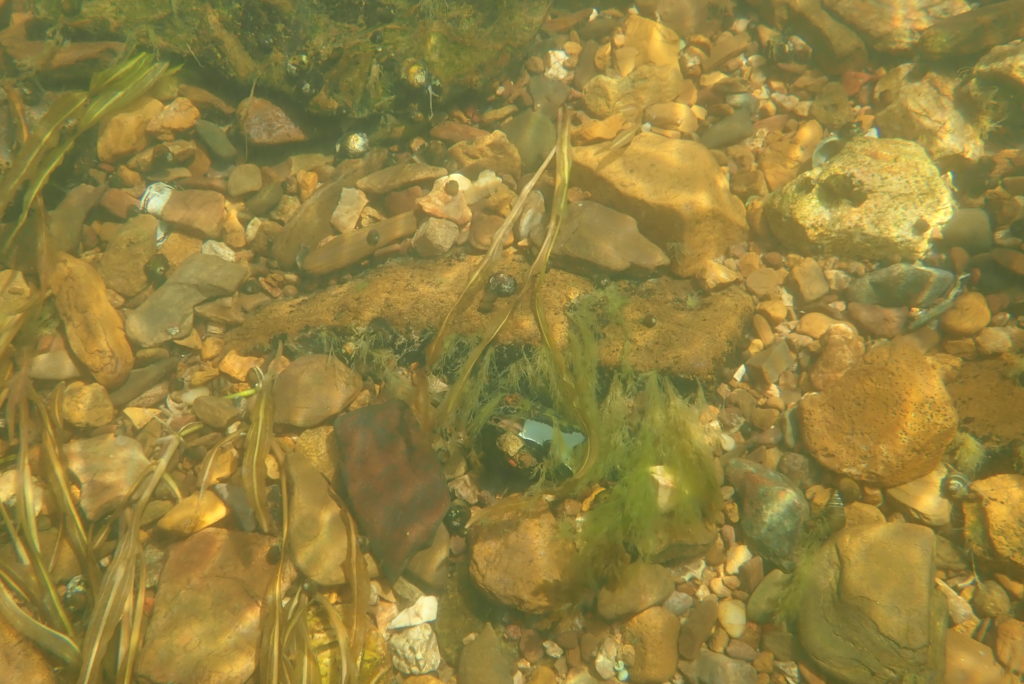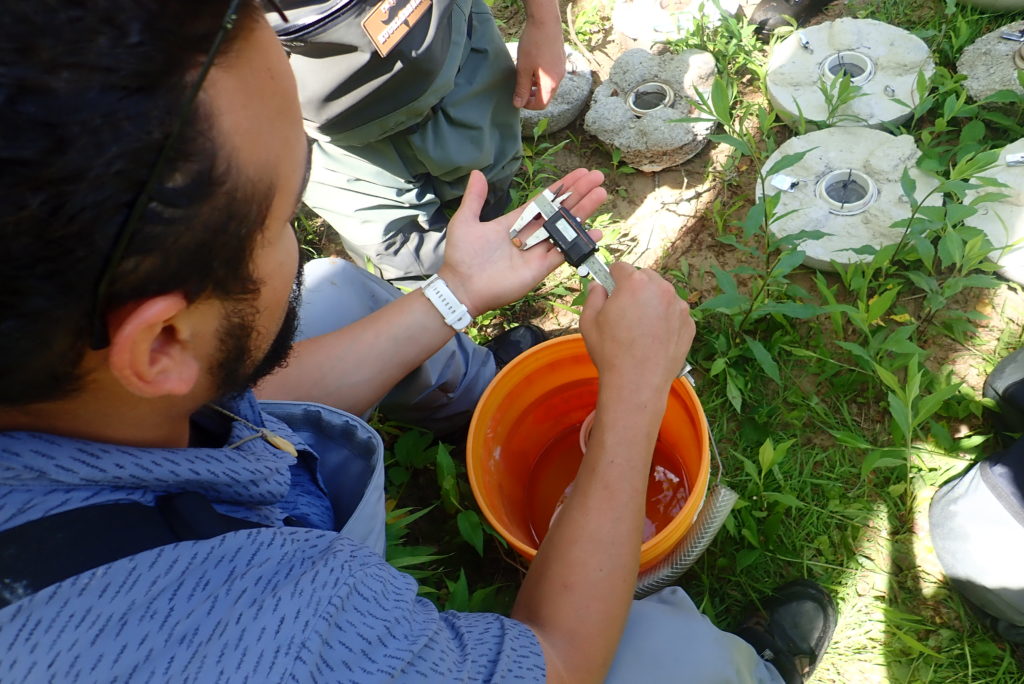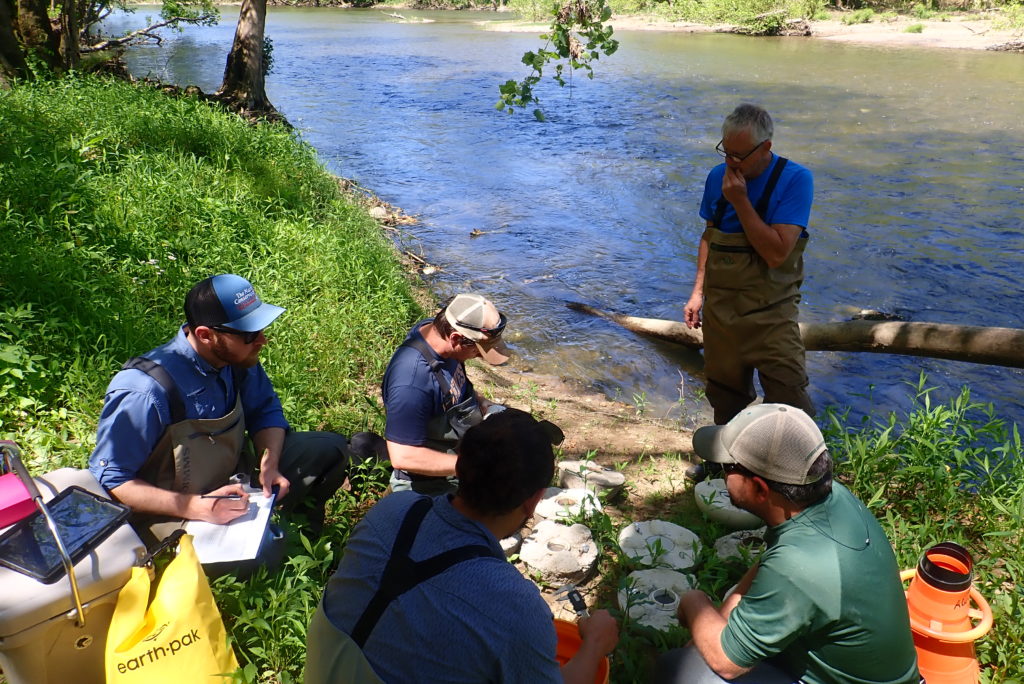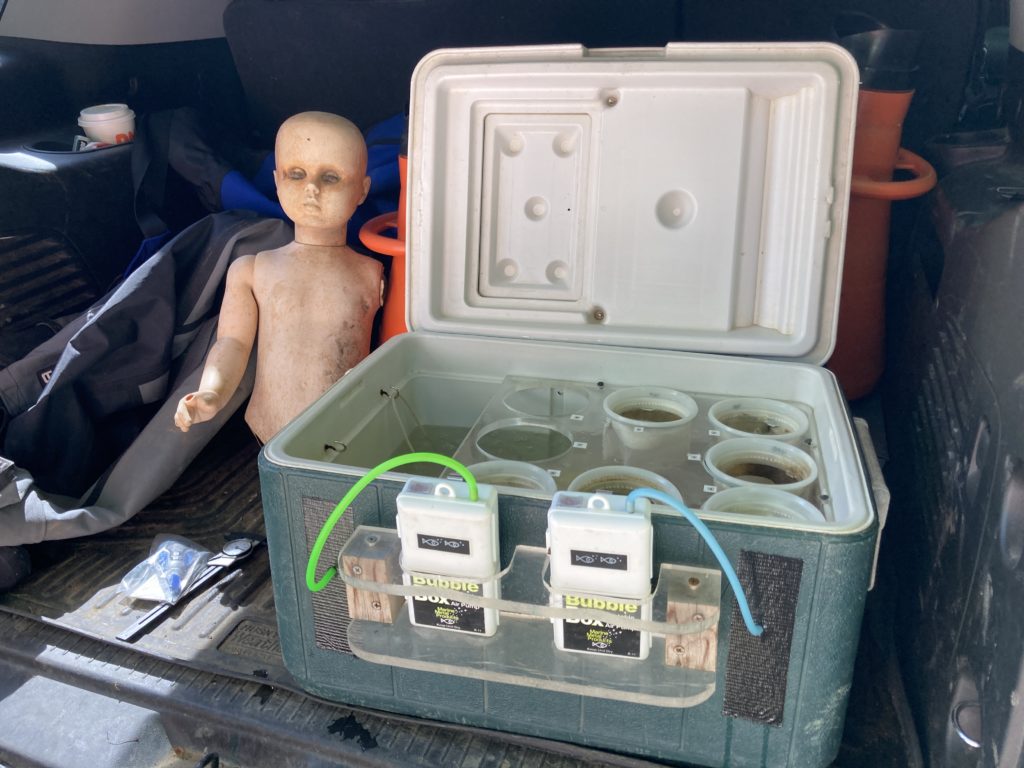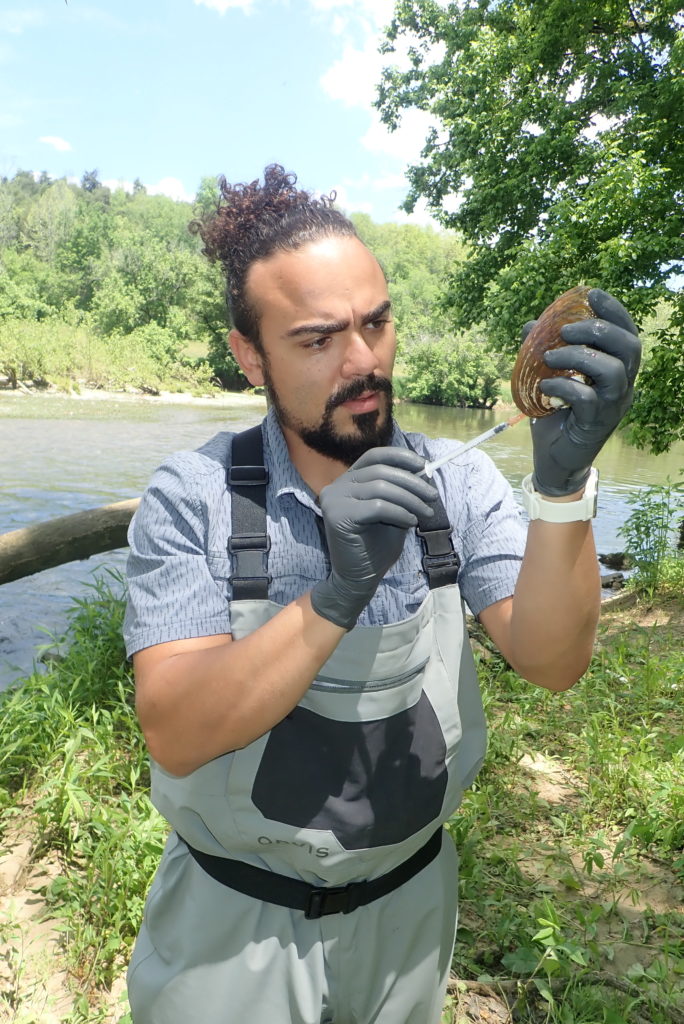Return to Seed Grants
Freshwater mussels are keystone species for river basin ecosystem health. As powerful filter feeders, they provide crucial ecosystem services including biofiltration and nutrient cycling/deposition. However, populations have dramatically declined in North America, and mortality outbreaks of unknown cause have been increasingly problematic in recent decades. In 2016, biologists started to observe seasonal mass mortality events in the Clinch River. This local river is a freshwater biodiversity hotspot and home to one of the most abundant, unique, and imperiled mussel assemblages in the world. We are taking a transdisciplinary, One Health approach to determine most likely causes and drivers of mortality events. This project will longitudinally assess changes in hemolymph health indices, pathology, and microbiomes in mussels maintained in silos at impacted sites. It will monitor the growth and survivorship of these mussels for comparison with specimens from past die-off events archived in the malacology collection at the McClung Museum. Furthermore this study will incorporate modelling of spatiotemporal patterns in die-offs fitting hypotheses of direct environmental contamination versus host-driven transmission by proximate contact.
Mission
Improve the understanding of factors contributing to mussel declines in our region..
Purpose
The purpose of this study is to determine likely causes for seasonal mortality events in the Clinch River.
Project Activities
Mussels are maintained in silos at two study sites in the Clinch River and are periodically assessed. During routine health checks, we measure their growth and survivorship and examine them for clinical signs of disease. We assess seasonal changes in health using hemolymph indices, histopathology, and high-throughput sequencing of host-associated bacterial assemblages. We will also be building mathematical models of population viability to evaluate predicted scenarios of contact-based infection versus river-flow-based contamination.
